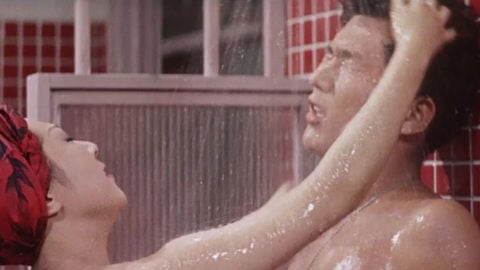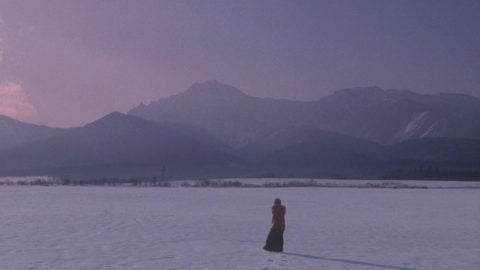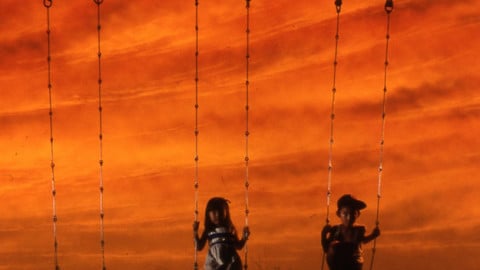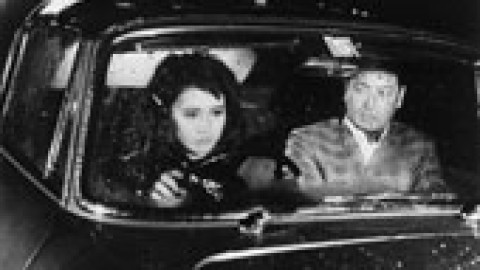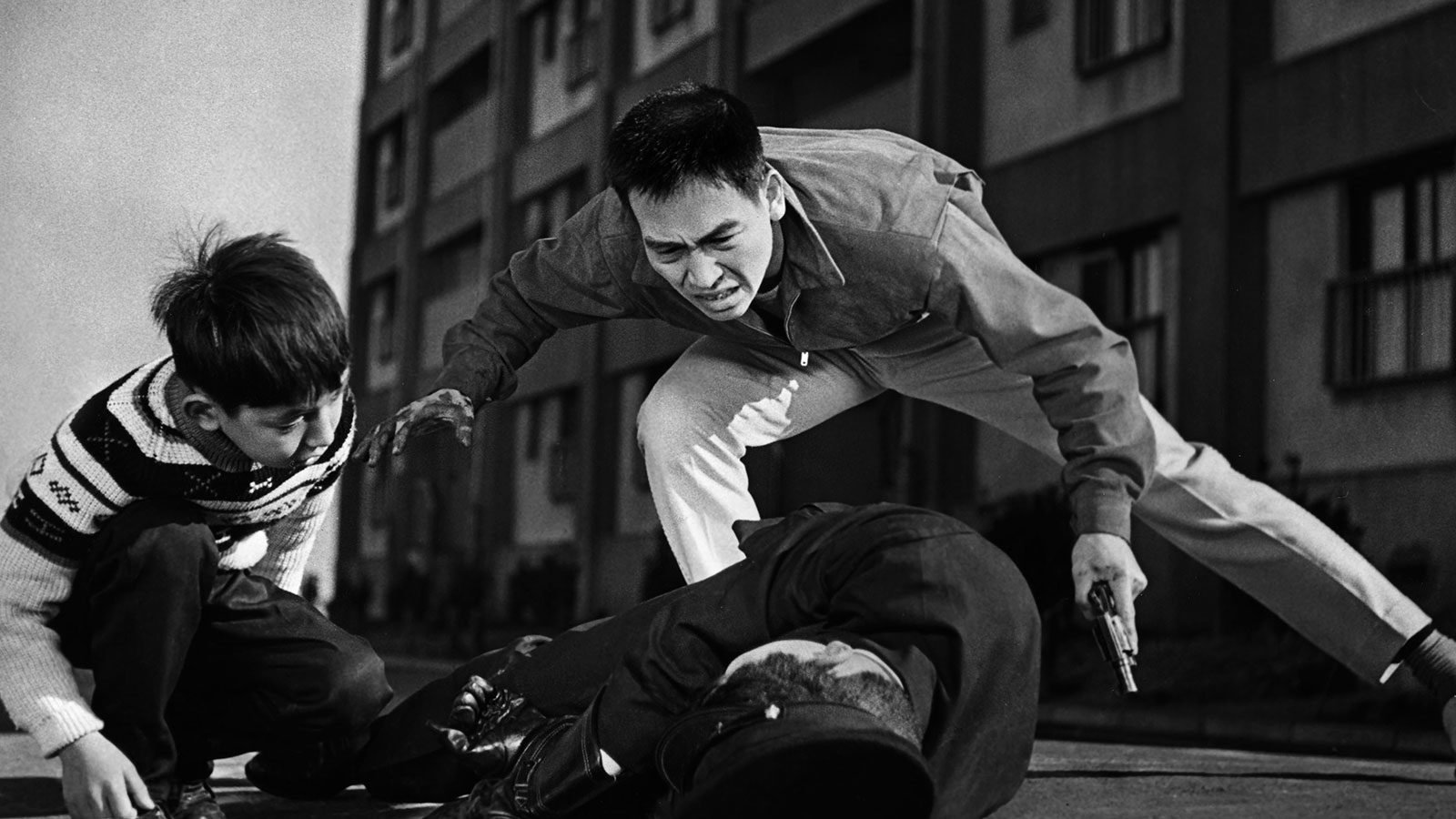
All Our Yesterdays
Masahiro Shinoda has long been enshrined in the Western canon of great Japanese directors as one of the key figures of the Japanese New Wave. A usual suspect in the writings of such key critical gatekeepers as David Desser, Donald Richie, and Audie Bock, he’s a logical choice for retrospective treatment.
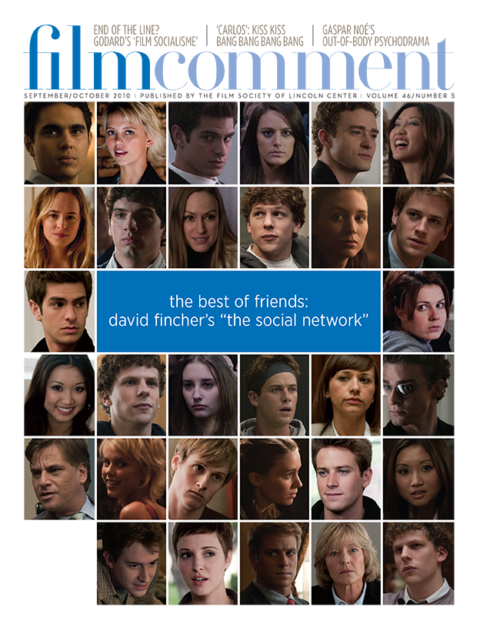
Born in 1931 and raised during wartime, Shinoda entered Shochiku studios in 1953 after his mother’s death forced him to abandon his studies (he majored in theater history) and find a job. Serving as an assistant to every major director from the studio stable (including Yasujiro Ozu on Tokyo Twilight in 1957), he came to admire some of his mentors deeply, but grew dissatisfied with the system of in-house development. “The main thing I learned,” he once said, “was that if I became a director myself, under no circumstances would I use the kind of scripts Shochiku was then using.”
Shinoda would soon get the chance to put his money where his mouth was. As the Sixties dawned, the film industry was beginning to feel the heat from television. Attendance figures had declined rapidly from their mid-Fifties heyday, when the number of tickets sold reached one billion a year. In an attempt to cater to shifting demographics, Shochiku decided to give three promising upstarts their first shots. The “Sun Tribe” craze of youth films that began in the wake of Takumi Furukawa’s Season of the Sun and Ko Nakahira’s Crazed Fruit in 1956 had proven that the young were still buying cinema tickets.
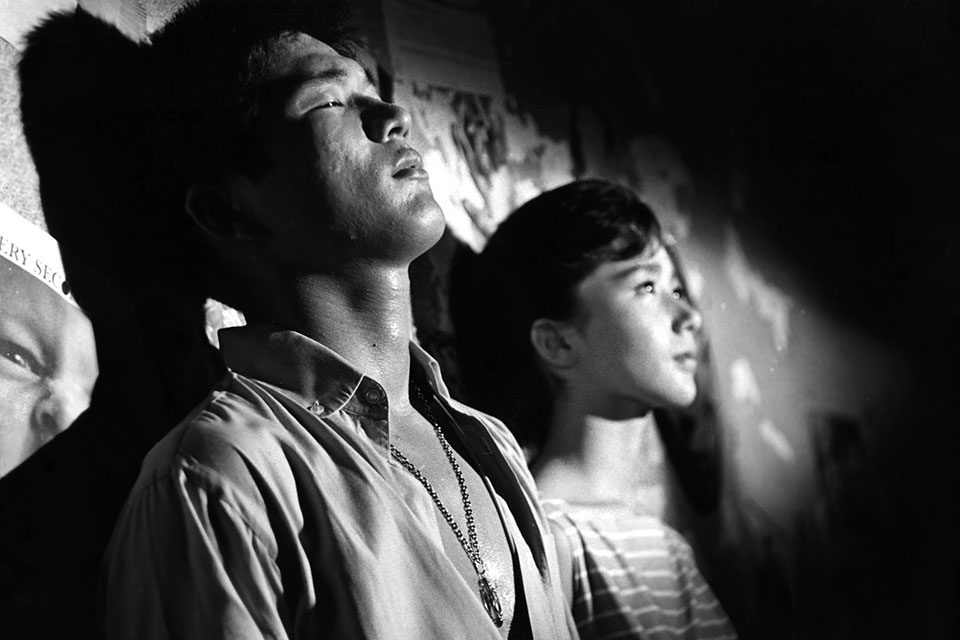
Youth in Fury
Following the debut films of Oshima and Yoshishige Yoshida, Shinoda was hired to write and direct One-Way Ticket for Love (60), under the condition that he build it around a Neil Sedaka hit song. Though it proved a box-office failure that temporarily relegated Shinoda back to assistant status, he returned to directing the same year, aided by the success of Oshima’s Cruel Story of Youth. He made three films scripted by poet and soon-to-be countercultural hero Shuji Terayama: Dry Lake (aka Youth in Fury, 60), Killers on Parade (61), and Tears on the Lion’s Mane (aka A Flame of Youth, 62). Tackling such torn-from-the-headlines issues as the protests surrounding the controversial U.S.-Japanese Security Treaty and corporate corruption, this trio solidified the reputations of both director and screenwriter.
However, Shinoda would soon abandon contemporary subjects, setting himself apart from his peers. Beginning with 1964’s The Assassin (aka Assassination), he began to gravitate toward period material. His aim was to “take hold of the past and make it stand still so that [he could] examine it from different angles” in order to better examine the present and what was happening in society around him. “Filmmakers should bear witness to the politics of their age,” he declared.
Set during the tumultuous last days of the feudal shogunate in the mid-19th century, The Assassin is a very subjective biopic of Hachiro Kiyokawa, a masterless samurai hired by the shogun to combat rebel forces intent on restoring the emperor to power. Kiyokawa’s life as a government-sanctioned killer is recounted almost entirely through the eyes of others—eyewitnesses from both sides of the power struggle. What emerges is a portrait of a pragmatist who switches allegiances whenever it suits him, but also a man who can be branded neither hero nor villain. Kiyokawa’s times were characterized on all levels by confused decision-making, ill-advised action, and emotional responses to problems that required rational thinking. Those in authority were particularly unsure as to the best way to counter the threat of American gunboats that had taken up position in Tokyo Bay in 1846.
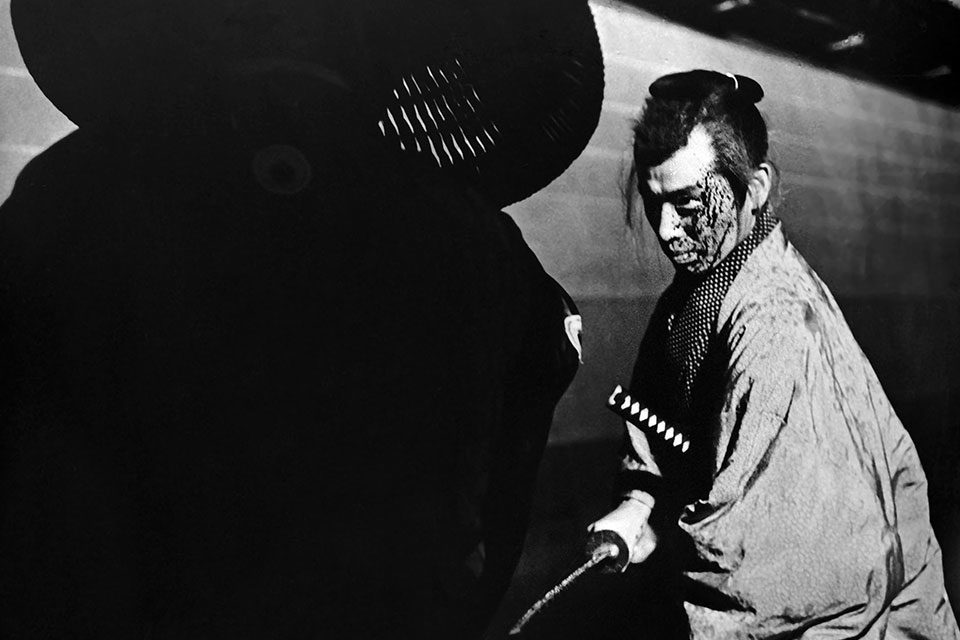
The Assassin
Seen today, what is remarkable about The Assassin is how far removed it is from both the scathing pamphleteering of Oshima and the increasingly inward works of Yoshida. It has far more in common with the later films of Kinji Fukasaku—all frenzied action, freeze-frames, flow-chart narrative, and unwritten history. Donald Richie provided a pointer to the kinship between the two filmmakers when he likened the many scenes of backroom political scheming to “feudal newsreels.”
Unlike Fukasaku (and Shohei Imamura), what interests Shinoda is not so much the history that Japan forgot but the patterns of behavior that are repeated throughout that history into the present. The confusing historical narrative of The Assassin and Kiyokawa’s wavering loyalty only serve to blur the distinction between the old power and the new: whether it be militarist or imperial rule, there is no real change.
It is this point that emerges as the dominant motif in the director’s Sixties and Seventies work. Pale Flower (64), made just before, is a contemporary tale whose yakuza milieu makes it feel like a period piece. Every gesture in this netherworld is ceremonial and handed down from centuries gone by. Inversely, Shinoda has described his swashbuckler Samurai Spy (65)—about a lowly swordsman who is mistaken for a double agent and subsequently badgered by both sides of a conflict—as an allegory for Japan’s position during the Cold War.
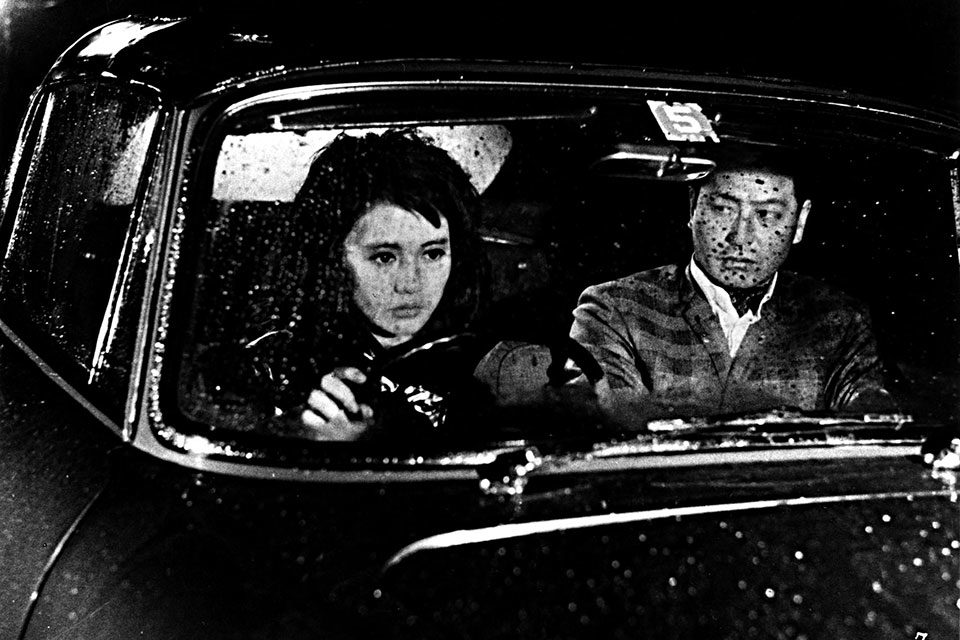
Pale Flower
Shinoda was a teenager when Japan surrendered in August 1945. The country’s defeat and the subsequent relegation of a formerly divine emperor to mortal status sowed in the young man a distrust of authority and a curiosity about what aspects of the Japanese character could have led the country into war. “All Japanese culture flows from imperialism and the emperor system,” he once told Joan Mellen, and his film gives the impression that little has fundamentally changed through the ages. Tradition endures: the contemporary hero of Tears on the Lion’s Mane is just as subject to an invisible system of giri (obligation) as the 17th-century protagonist of the Monzaemon Chikamatsu adaptation Double Suicide (69). The only solution the early-20th-century townsfolk of the ghost tale Demon Pond (79) come up with to end a devastating two-year drought is to sacrifice the prettiest girl in town to the Dragon God said to reside at the bottom of the eponymous pond.
This distrust of authority and resignation to the unchanging nature of the national character engender a certain aloofness in Shinoda’s work. Combined with the director’s aestheticism and his fascination with the beauty of decay and destruction (as in the slow voluntary spirals of beautiful young women in Pale Flower and his 1965 Kawabata adaptation With Beauty and Sorrow), his viewpoint has been categorized as nihilistic. Pale Flower scriptwriter Masaru Baba objected so strenuously to Shinoda’s treatment of his material that the film’s release was delayed by almost a year.
This quality, however, makes Shinoda’s work more universal and perhaps even more enduring than many of Oshima’s political polemics from the same period. The farcical action in The Scandalous Adventures of Buraikan (70), a kabuki-style portrayal of life on the fringes of the floating world of old Edo, revolves around the local lord’s puritanical program of “reforms” that includes the banning of prostitution, public performances, and fireworks. Seen today, the film plays like an allegory of then-Tokyo politician (and former Shinoda collaborator) Shintaro Ishihara’s attempts to sanitize the Japanese capital’s seedier districts.
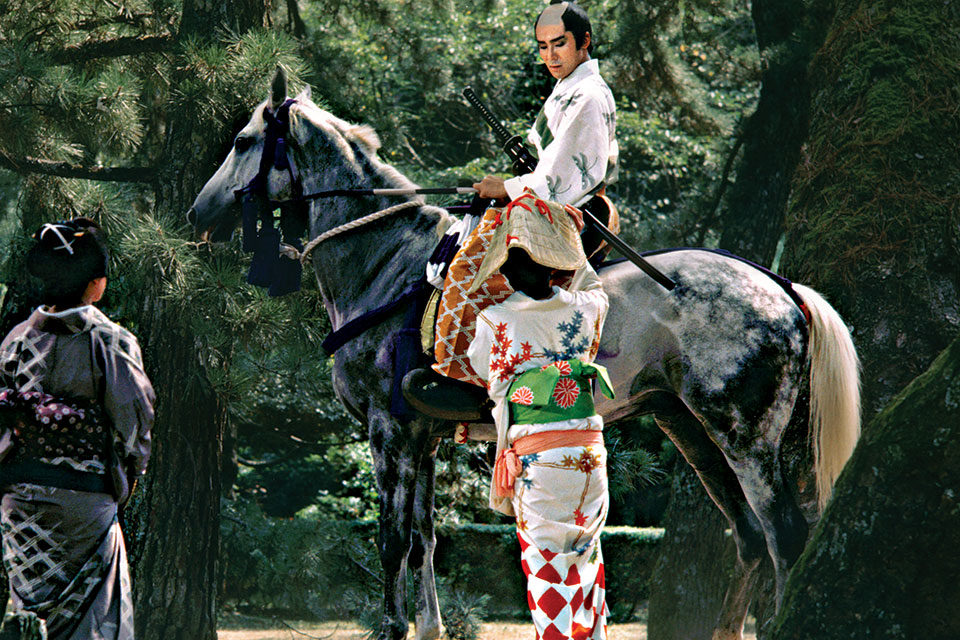
Gonza the Spearman
During the Eighties, Shinoda began to take the investigation of his formative years more literally, making MacArthur’s Children (84), Takeshi: Childhood Days (90), and Moonlight Serenade (97), a loose trilogy of nostaligia-driven films about growing up in a postwar Japan. Borderline sentimental, these saw the director drift off into what Alex Jacoby termed “middle-age conformism.” This was further confirmed by Gonza the Spearman, Shinoda’s 1986 return to the cradle of Shochiku after 21 years as an independent. Like Double Suicide, it was adapted from a Monzaemon Chikamatsu play by scriptwriter Taeko Tomioka, but unlike its radically stylized predecessor, the result is classical, static, and dull—notwithstanding its Silver Bear prize in Berlin.
The former radical stylist unfortunately remained lackluster, even after he began dabbling with CGI. Chronicling the true story of a German spy who passed Japanese military secrets to the Russians during World War II, Spy Sorge (03) has the turgid splendor of a would-be epic. As a historical film, it is an even greater counterpoint to The Assassin than Gonza the Spearman was to Double Suicide. A pet project of the director’s, it is a three-hour-plus, shot-on-video abomination. When the movie failed to set the box office on fire, Shinoda wisely retired.



